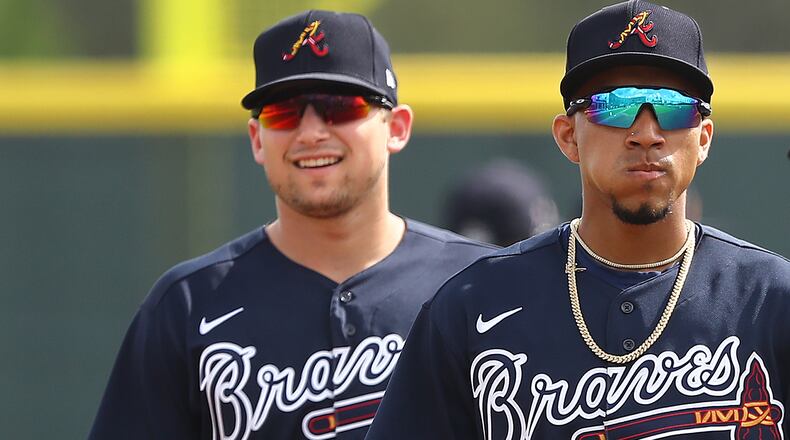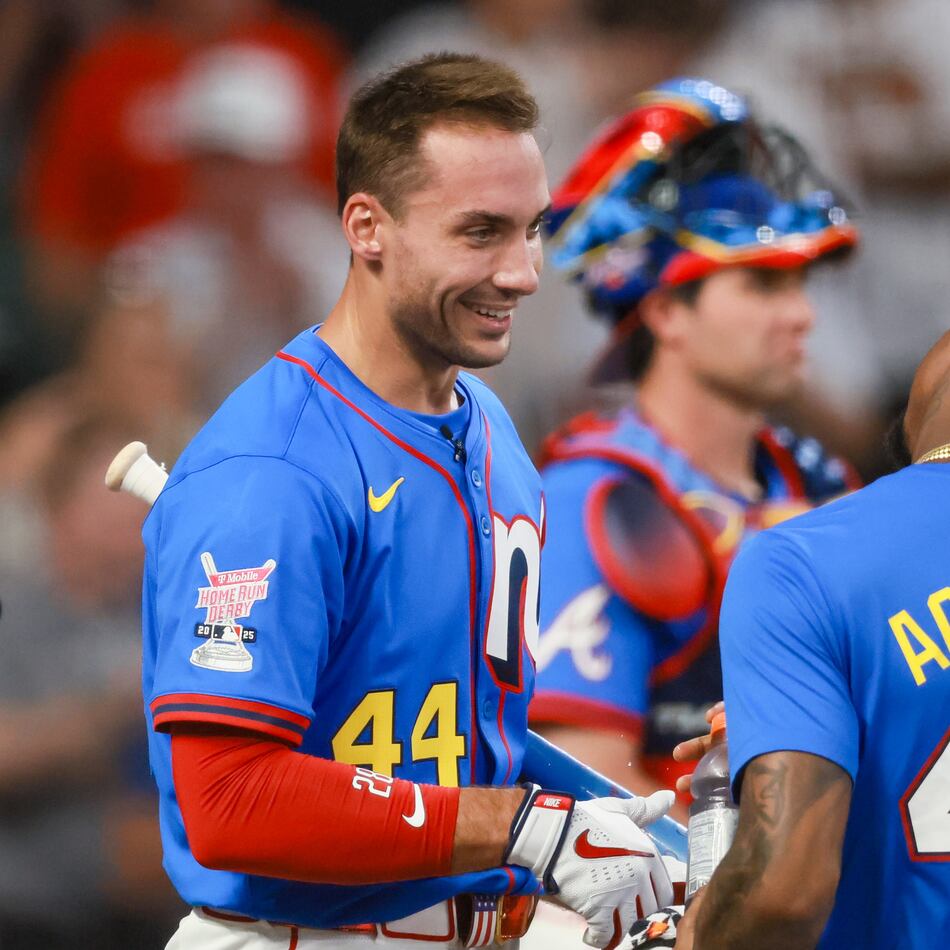I was thinking about what to make of the Braves in spring training when MLB canceled the rest of the exhibition games. That’s the right call because of the COVID-19 pandemic. Eventually MLB will play games that count — the regular season will be delayed by at least two weeks — so I’m still wondering if anything can be determined from the 19 Grapefruit League games played by the Braves.
I know what you are thinking. Spring training statistics should be viewed skeptically. For starters, batters frequently face pitchers who aren’t major-league caliber (and vice versa). Yet spring stats shouldn’t be dismissed completely because, in some cases, they can be predictive for the regular season.
That's the conclusion of a study by Dan Rosenheck, a data editor for The Economist. He found that spring performances at either extreme can provide hints about the coming regular season by looking at some key numbers that "stabilize" with small sample sizes. For starting pitchers: walk rates, strikeout rates and ground-ball rates. For hitters: walk rates, strikeout rates and isolated power (percentage of hits that go for extra bases).
Those numbers don't say much on their own. But Rosenheck found some predictive value by comparing them with Dan Szymborski's ZiPS projections for the season. (It's a mild effect, but a little can mean a lot in baseball.) I did that with Braves regulars who had very good or very bad springs this year to see if the numbers provide clues about whether those trends might carry over to the season.
There are signs that Austin Riley and Johan Camargo, candidates for the third base job, will produce in the summer like they did during the spring. The same goes for three pitchers vying for two rotation spots: Felix Hernandez, Kyle Wright and Sean Newcomb. Ronald Acuna and Marcell Ozuna had terrible springs at the plate, but more on that later.
Let’s start with Riley. A sky-high strikeout rate (36.4%) held him back during his rookie season. ZiPS projects a 29% strikeout rate for Riley this season. He had a 15.6 percent strikeout rate in 32 plate appearances in Florida while still hitting for power (four extra-base hits). That might mean something for Riley’s season to come.
Camargo scuffled as a utility player in 2020. His peripheral statistics in 31 plate appearances during the spring are in line with what ZiPS projects across the board for the season. Those numbers point to a potential bounce-back season for Camargo.
Hernandez, a former Cy Young winner, is trying to stick in the majors after three consecutive ineffective (and unhealthy) seasons for the Mariners. During the spring Hernandez outperformed his FanGraphs Steamer projections for strikeout and walk rates. There is no projection for ground ball rate, but Hernandez's spring mark (66%) is a good sign because his decline over the past three seasons correlated with fewer ground balls induced (fly balls and line drives are more likely to turn into extra-base hits).
High rates of strikeouts and walks were encouraging developments for Wright during the spring. Newcomb did those things while also getting a lot of ground balls (69.6% vs. Wright’s 41.9). Both players were much better in the spring than their ZiPS projections so maybe they are ready to make a jump this season.
As for Acuna and Ozuna, it was an ugly spring. They both struck out a lot. Ozuna had one walk. Neither had an extra-base hit. But small sample size is a mitigating factor for both players: 31 PAs for Acuna, 25 for Ozuna.
Really, that’s the caveat for all the Grapefruit League numbers. There’s a small sample size during a normal spring (in his study Rosenheck used 50 PAs as the cut-off for hitters). The shortened schedule this year means there’s even less to go on.
The strange circumstances might also cloud the analysis. Players won’t have the benefit of a full spring this season. After at least four weeks with no live competition, they’ll have to quickly get ready for the games that count. A situation like that last happened in 1995, when the MLB season began in late April after a players’ strike that started the previous year.
The Braves went on to win the World Series in 1995. They are contenders this season after winning back-to-back NL East titles. The rotation and third base are question marks. The spring performances of players vying for those jobs should be reassuring.
As for Acuna and Ozuna, there’s no way they’ll be as bad during the season as they were this spring. ZiPS likes Acuna to produce more at the plate in 2020 than in 2019, when he finished fifth in NL MVP voting. It projects Ozuna to hit better than he did the past two seasons, which were pretty good, though not like he did during his career-best 2017 season.
If Acuna and Ozuna meet those expectations, everyone will forget about their terrible springs. For now, their bad performances and the good showings by their teammates are things to keep in mind. They could mean something for the season whenever it starts.
About the Author
The Latest
Featured


